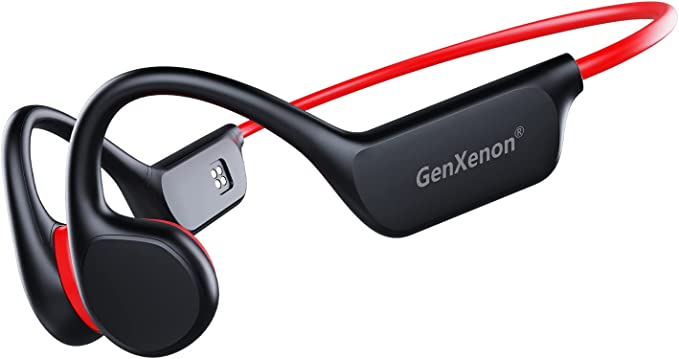The Silent Engineer: A Teardown of the Sensor and Safety Systems in Modern Automated Devices
Update on Oct. 12, 2025, 6:07 p.m.
We live in an age of casual automation. We command speakers with our voices, our thermostats anticipate our needs, and our vacuums navigate our homes with quiet efficiency. The word “smart” has become a ubiquitous prefix, attached to everything from coffee mugs to cat litter boxes. But this seamless convenience masks a world of intricate engineering. When we label a device as “smart,” what are we truly describing? What is the silent engineer doing behind the plastic shell to translate a complex real-world problem—like maintaining a hygienic pet environment—into a reliable, automated solution? To answer this, we must metaphorically take out our toolkit and perform a technical teardown, not of a single product, but of the core principles that make such devices possible.
An automated litter box serves as a perfect microcosm of modern consumer IoT (Internet of Things) engineering. It must perceive its environment, make logical decisions, perform mechanical actions, and, above all, operate with absolute safety around a living, unpredictable being. Let’s dissect the key technological layers that work in concert to achieve this, from the raw senses of the machine to the logic that governs its actions.

The Senses of the Machine: Deconstructing Core Sensor Technologies
At the foundation of any smart device are its sensors—the components that convert physical phenomena into electrical signals that a computer can understand. In a device like the PETKIT PUROBOT MAX PRO, several types of sensors form a sophisticated sensory apparatus.
1. The Weight Sensor (Load Cell):
The most fundamental sensor is often a set of load cells integrated into the device’s feet. A load cell is a transducer that converts force into a measurable electrical output. Inside a typical consumer-grade load cell is a strain gauge—a metallic foil pattern that deforms when weight is applied. This deformation changes its electrical resistance. By passing a current through the gauge and measuring the change in resistance, an embedded system can calculate the applied weight with remarkable precision. This provides two critical pieces of information: the presence of a cat (a weight reading above a certain threshold) and the cat’s specific weight, enabling health tracking and multi-cat identification. It is the machine’s sense of “touch” or pressure.
2. The Proximity Sensor (Passive Infrared - PIR):
While weight sensors confirm a cat is in the device, proximity sensors are needed to detect a cat approaching or peeking inside. The most common choice for this is a Passive Infrared (PIR) sensor. Unlike an active infrared beam that is broken (like a garage door safety sensor), a PIR sensor is passive. It contains a pyroelectric sensor that can detect the infrared radiation naturally emitted by warm bodies. When a cat enters the sensor’s field of view, the change in infrared energy triggers a signal. It acts as the machine’s “eyes,” constantly watching the entrance for thermal signatures, providing a crucial, non-contact method of presence detection.
3. The Position Sensor (Hall Effect Sensor):
To control the mechanical cleaning cycle, the machine needs to know the exact position of its moving parts, such as the rotating drum. This is often achieved using a Hall effect sensor. This sensor works on a simple principle of magnetism: when a magnetic field is brought near the sensor, it generates a small voltage. By placing a tiny magnet on the rotating drum and a Hall effect sensor on the stationary frame, the system knows precisely when the drum has reached its “home” position or completed a full rotation. It provides the machine with proprioception—an internal sense of its own position.
The Central Nervous System: How the Microcontroller Unit (MCU) Makes Decisions
These sensors are the machine’s sensory organs, but they are useless without a brain. This role is filled by a microcontroller unit (MCU), a small, self-contained computer on a single integrated circuit. The MCU is the central nervous system of the device. It receives the constant stream of analog and digital signals from the weight, PIR, and Hall effect sensors.
The MCU runs a program called firmware—a set of instructions permanently stored in its memory. This firmware contains the core logic of the device. A simplified version of this logic might look like this:
- MONITOR: Continuously read data from weight and PIR sensors.
- DETECT ENTRY: IF weight > 3 lbs AND/OR PIR sensor is triggered, set a “cat_present” flag to TRUE.
- DETECT EXIT: IF “cat_present” is TRUE and weight drops to near-zero for more than 5 seconds, set “cat_present” to FALSE and start a countdown timer (e.g., 3 minutes).
- EXECUTE CLEANING: IF countdown timer reaches zero AND “cat_present” is FALSE, activate the motor.
- MONITOR CYCLE: Use Hall effect sensor data to control motor speed and stop it precisely after one full rotation.
- INTERRUPT: AT ANY POINT, IF PIR or weight sensors are triggered, immediately halt the motor and reset.
This loop of sensing, interpreting, and acting is the essence of an embedded system.
The Engineering of Trust: A Deep Dive into Redundant Safety Systems
The simple logic above works in a perfect world. But what if a sensor fails? What if the PIR sensor is blocked by dust, or the weight sensor gets stuck? In a safety-critical application involving a pet, a single point of failure is unacceptable. This is why robust engineering relies on the principle of redundancy.
A well-designed safety protocol, like the “xSecure” system described by PETKIT, never trusts a single sensor. It employs a multi-sensor fusion approach. The motor will not activate unless multiple conditions are met. For example, the cleaning cycle might only start if the weight sensor reads zero and the PIR sensor has been clear for the full countdown period.
This creates a fail-safe. If the weight sensor fails and incorrectly reports zero, the PIR sensor still sees the cat and prevents the cycle from starting. If the PIR sensor fails, the weight sensor still detects the cat and keeps the system in a safe state. This is active, intelligent redundancy.
Furthermore, safety is engineered at the mechanical level. An “anti-pinch” structure is not just a software command; it’s a physical design choice that ensures the entrance can never fully close or create a shear point, even in the event of a total software crash or motor malfunction. Trust is not just programmed; it is built.
The Connected Brain: Firmware, IoT Connectivity, and the Double-Edged Sword of Security
Finally, the “smart” aspect is layered on top of this robust embedded system. A Wi-Fi module connects the MCU to the internet. This allows the device to send its sensor data and status to a cloud server, which in turn communicates with the owner’s smartphone app. This connectivity enables powerful features: remote control, real-time notifications, and the long-term health data logging discussed previously.
It also allows for one of the most critical features of any modern electronic device: Over-The-Air (OTA) firmware updates. The manufacturer can remotely patch bugs, improve the decision-making algorithm, or even add new features long after the product has been sold.
However, as a 2024 report by Avast on IoT security underscores, every connected device is a potential entry point for malicious actors. The security of the device’s firmware, the communication protocol to the cloud, and the cloud server itself are of paramount importance. A vulnerability could potentially allow an attacker to disrupt the device’s function or, in a worst-case scenario, access data or other devices on the user’s home network.

Conclusion: The Elegant Complexity Behind Seamless Automation
The next time you see a “smart” device operate, look past the deceptively simple action it performs. See the silent engineer’s work: the network of sensors gathering data like nerve endings, the microcontroller processing it with cold logic, and the layers of redundant safety protocols standing guard. A product that works reliably and safely in the chaotic environment of a real home is a testament to an elegant integration of hardware, software, and a deep consideration for what happens when things go wrong. The automation we enjoy is not magic; it is a complex, carefully choreographed dance of electrons and code, built on a foundation of solid engineering principles.




























